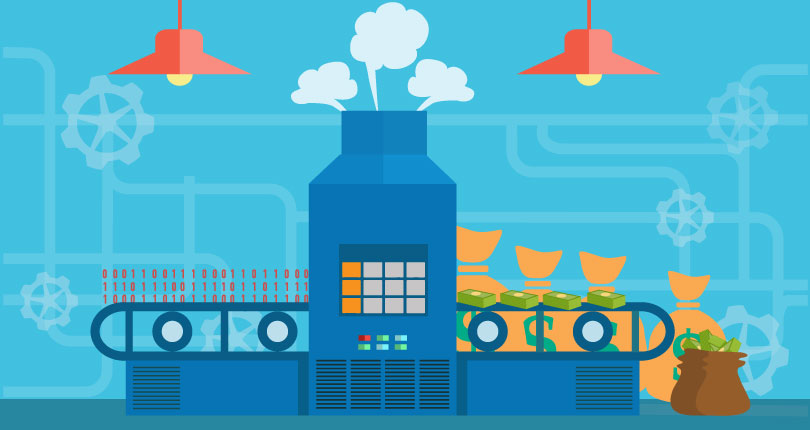How to Monetize Data and Increase Revenue

I know. You’re not a data company.
You probably don’t have ‘Big Data’ that third parties will be clamoring for. You can’t sit back and choose the highest bidder. And even if you could, you probably aren’t sure you want to be selling data anyway. Isn’t there red tape around all that?
Allow me to let you in on a secret. You don’t have to sell it.
Data is a hidden source of revenue, even if you don’t have much of it.
And if you do have a lot, you probably aren’t tapping into its full income potential.
It’s time to monetize your data.
But what is data monetization?
Data monetization is simply making a measurable, positive impact on business revenue using data.
‘Measurable’ is key here. If you can’t measure the impact, you’re not monetizing your data.
Okay. But how do you monetize data?
There are two options:
- Indirect Monetization
- Direct Monetization
Today, we’re going to take a close look at Indirect Data Monetization. Businesses of all sizes can make marked improvements using this method, and there’s no red tape to navigate. See part 2 of this series to learn more about monetizing your data with Direct Monetization.
Indirect data monetization is positively impacting your bottom line without ever letting your data leave the business. It’s about gleaning insights into your business, customers, and clients to make changes that add value to your own operations.
Data opens up the inner workings of your business. Take the time to use these insights to your competitive advantage. Perhaps you have more data than you have the capacity to sift through – every transaction creates data. Or maybe you don’t have much, and you’re wondering how to use it.
Here are some ideas.
Six ways to indirectly monetize your data
1.Reduce costs
With data, you gain insights into how your organization’s time and money is spent. Take a look at where you could save money by streamlining operations, such as reducing stock or upgrading cost-heavy business tools. Or perhaps you are spending too much in one department on something that brings little value to the business. You can soon identify these things with a close look at your data.
2. Enhance your product or service
Discover your customers’ opinions on your product, particularly any sticking points they have. Then, solve them with an enhancement of your product or service. This will increase loyalty, and in turn, retain customers. Alternatively, you can sell your new version at a higher price point to immediately make money.
Another option is use data to understand their secondary problems. Use this data to upsell other products with ‘similar product’ recommendations or price optimizations.
3. Enter new business sectors or tap into new types of customers
Discover new customer types that could benefit from your product or service to generate more business. Your customer data could uncover some surprising users of your product or service. This could be a business sector, industry, or customer demographic you hadn’t previously tapped into.
4. Develop new products, services, or markets
With data, you can discover gaps in the market and customer problems that have not been addressed. Can you plug the gap? Use your insights to back the launch of a new product or service, or even the development of a new market. By understanding what and how your customers purchase, and what they value, you can open up new business opportunities.
5. Drive sales and marketing
Understand why, how, and when customers use your product by studying your customer data. With this information, you can target marketing more accurately and spend your budget more effectively for better conversions and leads. You can also enhance your customer engagement by understanding what makes customers stay on your site or app, or what makes them read your newsletter.
6. Improve productivity and efficiencies
Monitor how efficient, and therefore how productive operations, processes, and employees are. You will be able to identify problem areas that you can track to understand the sticking points. Then, remove the hindrances to become truly efficient. You can also optimize your resource allocations so you achieve more in a shorter space of time.
These are certainly not the only ways that you can monetize your data, but I hope they give you a great start.
How do you start using your data?
First, identify what data sources you have available. What do you measure already? And what other metrics would take little extra effort to track? Start from there.
Then, collect your data together, ensure it is reliable, and use a data visualization tool to see patterns in your data and compare data sets against each other. This will start to give you an idea of the regular workings whatever your data set is concerned with.
With that information, you can start to identify irregularities in the patterns that could be key to identifying a sticking point or particularly good performance. Or, if something performs particularly poorly in comparison to everything else, you have identified an area to work on or remove.
Start with small steps, and slowly expand your data analysis to every area of your organization and customer base. You’ll be amazed at the impact these small changes can have on your bottom line.
Monetizing your data doesn’t need to be complex. It just needs a bit of dedicated effort to monitor the data.
Want to dig deeper into how to monetize your data? Download your free monetization guide today